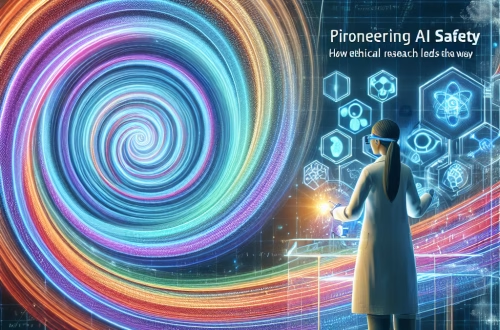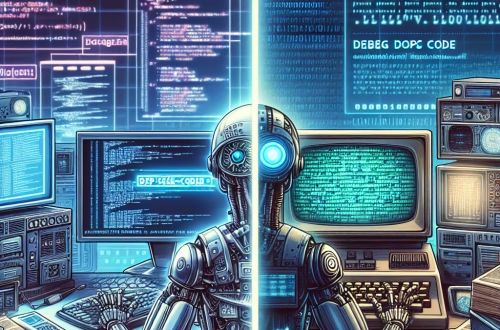Summary:
GPT-4o is OpenAI’s latest iteration of its Generative Pre-trained Transformer (GPT) series, designed to push the boundaries of AI language models. It builds upon the strengths of GPT-4, offering improved accuracy, faster response times, and enhanced contextual understanding. Unlike its predecessors, GPT-4o integrates multimodal capabilities, allowing it to process and generate text, images, and even audio inputs. This model is particularly significant for businesses, educators, and developers seeking more reliable and versatile AI tools. Understanding GPT-4o’s advancements helps users leverage AI more effectively in real-world applications.
What This Means for You:
- Enhanced Productivity: GPT-4o’s faster processing and improved accuracy mean you can generate high-quality content, code, or reports in less time, making it ideal for professionals who rely on AI assistance.
- Actionable Advice: Experiment with GPT-4o’s multimodal features—try uploading images or audio alongside text prompts to explore its full potential in creative or analytical tasks.
- Future-Proofing Skills: As AI evolves, staying updated with GPT-4o’s capabilities ensures you remain competitive in industries adopting AI-driven solutions.
- Future Outlook or Warning: While GPT-4o represents a leap forward, users should remain cautious about over-reliance on AI for critical decisions, as biases and inaccuracies can still occur. Continuous human oversight is recommended.
GPT-4o Unveiled: What’s New and How It’s Changing AI
Introduction to GPT-4o
GPT-4o is OpenAI’s newest AI language model, succeeding GPT-4 with significant upgrades in speed, accuracy, and functionality. Unlike previous versions, GPT-4o is designed to handle multiple data types—text, images, and audio—making it a truly multimodal AI system. This advancement opens new possibilities for applications in education, business automation, and creative industries.
Key Improvements Over GPT-4
GPT-4o introduces several groundbreaking features:
- Multimodal Processing: Unlike GPT-4, which primarily focused on text, GPT-4o can interpret and generate responses based on images, audio, and even video inputs.
- Faster Response Times: Optimized algorithms reduce latency, making interactions smoother for real-time applications like chatbots or virtual assistants.
- Improved Context Retention: GPT-4o handles longer conversations more effectively, reducing the likelihood of losing track of context in extended dialogues.
- Enhanced Accuracy: With refined training data and better fine-tuning, GPT-4o minimizes errors and provides more reliable outputs.
Best Use Cases for GPT-4o
GPT-4o excels in scenarios requiring versatility and precision:
- Content Creation: Writers and marketers can generate high-quality articles, scripts, or ad copies with minimal revisions.
- Education: Teachers and students benefit from interactive learning tools that explain concepts using text, diagrams, or audio explanations.
- Customer Support: Businesses can deploy GPT-4o-powered chatbots that understand and respond to customer queries more naturally.
- Creative Industries: Artists and designers can use GPT-4o to brainstorm ideas or generate visual concepts from text descriptions.
Strengths and Weaknesses
Strengths:
- Superior multitasking capabilities due to multimodal support.
- Reduced bias compared to earlier models, though not eliminated.
- Scalability for enterprise-level applications.
Weaknesses:
- High computational costs may limit accessibility for smaller businesses.
- Occasional hallucinations (fabricated responses) still occur.
- Limited real-time learning—it doesn’t update knowledge dynamically post-training.
Limitations to Consider
While GPT-4o is powerful, it’s not infallible. Users should verify critical outputs, especially in legal, medical, or financial contexts. Additionally, its reliance on pre-existing data means it may not handle niche or rapidly evolving topics perfectly.
People Also Ask About:
- How does GPT-4o differ from GPT-4? GPT-4o expands on GPT-4 by incorporating multimodal inputs (images, audio) and delivering faster, more accurate responses. It also improves context retention and reduces biases.
- Can GPT-4o replace human jobs? While it automates repetitive tasks, GPT-4o is best used as a collaborative tool. Jobs requiring empathy, creativity, or complex decision-making still need human oversight.
- Is GPT-4o free to use? OpenAI offers limited free access, but advanced features and higher usage tiers require a subscription, such as ChatGPT Plus or enterprise plans.
- What industries benefit most from GPT-4o? Education, healthcare (for documentation), marketing, and software development see significant gains due to its versatility in processing diverse data types.
Expert Opinion:
Experts highlight GPT-4o as a milestone in AI development but caution against unchecked adoption. Ethical concerns, such as data privacy and misuse, remain critical. The model’s biases, though reduced, necessitate rigorous validation in sensitive applications. Future iterations may focus on real-time learning and improved transparency to address these challenges.
Extra Information:
- OpenAI’s GPT-4 Research Page – Provides technical insights into the model’s architecture and training methodologies.
- MIT Technology Review on GPT-4 – Discusses the societal implications and limitations of advanced AI models like GPT-4o.
Related Key Terms:
- GPT-4o vs GPT-4 comparison
- Multimodal AI language models
- Best uses for GPT-4o in business
- How to optimize GPT-4o for content creation
- Limitations of OpenAI GPT-4o
Check out our AI Model Comparison Tool here: AI Model Comparison Tool
#GPT4 #Unveiled #Whats #Changing
*Featured image provided by Pixabay





